#sheetmusicdownload
Text
Irving Berlin - White Christmas (from the film Holiday Inn) lyrics and piano
Irving Berlin - White Christmas (from the film Holiday Inn) lyrics and piano (sheet music)
https://dai.ly/x8g6gw1
JAZZ
Irving Berlin

Irving Berlin's Jewish family immigrated from Russia to the United States in 1891. His father was a rabbi who got a job certifying meat under Kosher Law. After the death of his father in 1896, Irving had to find work to survive; he was employed as a newsboy and also performed on the street to get money.
The harsh reality of having to work even menial jobs to avoid starvation left a deep mark on Berlin's valuation of money. When he was working as a singing waiter at Pelham's Café in Chinatown, Berlin was asked by the owner to write an original song for the café, because a rival business had its own song published. «Marie from Sunny Italy» was the result, being released soon.
Although he only earned 37 cents, it opened the doors to a new career and a new name: Israel Baline was mistakenly printed as "I. Berlin" in the score. Many of her early songs, including "Sadie Salome (Go Home)," "That Mesmerizing Mendelssohn Tune," and "Oh How That German Could Love," achieved modest success both in sheet music, on recording, and on the vaudeville stage. , or as interpolations in various shows; but it was "Alexander's Ragtime Band," written in 1911, that catapulted him into one of Tin Pan Alley's biggest stars.
Following the success of "Alexander's", Berlin was rumored to be writing a ragtime opera, yet he produced his first full-length work for the musical stage, "Watch Your Step" (1914), starring Irene and Vernon Castle, the first musical comedy in making penetrating use of syncopated rhythms.
A similar show titled "Stop! Look! Listen!» followed that in 1915. In 1917, during World War II, he entered the US Army and staged a musical revue entitled Yip Yip Yaphank while at Camp Upton in Yaphank, New York. Billed as "a military mess cooked up by the boys from Camp Upton", the cast of the show was made up of 350 members of the armed forces.
The revue was a patriotic tribute to the US military, and Berlin composed a song titled "God Bless America" for the show, though he ultimately made no use of it. When it was performed years later, it became so popular that it was suggested that it could become the National Anthem, that is, a kind of national song.
It has remained until today as one of the most successful songs and one of the best known throughout the United States. Particularly remembered is the interpretation that it was made after the terrorist attack of September 11, 2001, when members of Congress sang it on the steps of the Capitol. Some songs from Yaphank's magazine were later included in the 1943 film "This Is the Army" which also featured other Berlin songs, both the film's title song and a cover of "God Bless America" by Kater Smith.
After the war, Berlin built his own theater, the Music Box, as a venue for annual revues featuring his latest songs; the first such magazine was "The Music Box Revue of 1921". The theater is still in use, occasionally. Although most of his works for the Broadway stage took the form of revues — collections of songs with no common theme — he wrote a few book shows.
The Cocoanuts (1925) was a comedy, with a cast that included, among others, the Marx Brothers. Face the Music (1932) was a political satire to a book by Moss Hart, and Louisiana Purchase (1940) was a satire of a southern politician, obviously based on the exploits of Huey Long.
The show featured a succession of hit songs, including "Easter Parade," "Heat Wave" (presented as the weather forecast), "Harlem on My Mind," and what is perhaps their most powerful ballad, "Supper Time," a tormented song about racial bigotry, with an unusual weight in a musical revue and which was sung by Ethel Waters, a magnificent singer of color, in a heartbreaking interpretation.
During World War II, after receiving permission from General George Marshall, Berlin organized a magazine made up of soldiers in the spirit of Yip Yip Yaphank. The result, This Is the Army, opened on July 4, 1942, with a cast of over 300 soldiers, and remained on the stage for three years, first on Broadway, then on a tour of the United States, and then on the Foreign.
Irving Berlin's most successful Broadway musical was: Annie Get Your Gun (1946), produced by Richard Rodgers and Oscar Hammerstein II. Loosely based on the life of shooter Annie Oakley, the music and lyrics were written by Berlin, with a book by Herbert Fields and his sister Dorothy Fields. Berlin had been hired after the death of Jerome Kern. At first, he turned down the offer, stating that he knew nothing about hillbilly music, but the show ended up running 1,147 performances.
Annie Get Your Gun is considered the best musical in Berlin, not only because of the number of musical hits it contains, but also because its songs successfully combine the description of the characters with the help of the development of the story.
In 1927, one of Berlin's songs, "Blue Skies", a hit since 1926, was performed in the first talking picture in cinema history: The Jazz Singer, sung by Al Jolson. Top Hat (1935) was the first in a series of Berlin-sponsored film musicals to star popular and attractive performers (such as Bing Crosby, Fred Astaire, Judy Garland, and Ginger Rogers), with romantic storylines and a soundtrack to base of his new and old songs.
Irving Berlin did not compose in a traditional way; he used mainly the black keys of a piano. He was a composer of the music for such films as Mark Sandrich's Top Hat (1935), Stuart Heisler's Blue Sky (1946), and Easter Parade (1948). Among his best-known songs are "Everybody's Doin 'It", "There's No Business Like Show Business", "White Christmas" and "Easter Parade".
In 1968, he received the Grammy for a life dedicated to music. He was the author of more than fifteen hundred songs, becoming one of the most important composers in the United States. Although he never learned to read music beyond an elementary level, he wrote over 3,000 songs, many of which left an indelible mark on American music and culture. He produced 17 films and 21 Broadway shows, in addition to his individual songs.
List of songs written by Irving Berlin
Read the full article
8 notes
·
View notes
Text
Ennio Morricone (1928-2020)
Ennio Morricone, (10 November 1928 – 6 July 2020)
Best Sheet Music download from our Library.Short biographyMorricone composed over 400 scores for cinema and television, as well as over 100 classical works. He started as a talented football player for A.S. Roma but left the sport to follow his passion for music.
Please, subscribe to our Library. Thank you!
List of compositions by Ennio MorriconeFilmography
1950s
1960s
1970s
1980s
1990s
2000s
2010s
Television films and series1960s
1970s
1980s
1990s
2000sStage productions
Radio productions
Advertising campaigns
Selected films with music by Morricone
Classic (absolute) music
Live albums
Studio albumswith Gruppo di Improvvisazione di Nuova Consonanza
with Mauro Maur
with Chico Buarque
Other
Selected compilations
Remix albums
Box sets
DVDs
Tribute albums
Ennio Morricone, (10 November 1928 – 6 July 2020)
Morricone was an Italian composer, orchestrator, conductor, and former trumpet player who wrote music in a wide range of styles.
https://youtu.be/Jjq6e1LJHxw
Short biography
Morricone composed over 400 scores for cinema and television, as well as over 100 classical works. He started as a talented football player for A.S. Roma but left the sport to follow his passion for music.
His score to The Good, the Bad and the Ugly (1966) is considered one of the most influential soundtracks in history and was inducted into the Grammy Hall of Fame.
His filmography includes over 70 award-winning films, all Sergio Leone‘s films since A Fistful of Dollars, all Giuseppe Tornatore‘s films since Cinema Paradiso, The Battle of Algiers, Dario Argento‘s Animal Trilogy, 1900, Exorcist II, Days of Heaven, several major films in French cinema, in particular the comedy trilogy La Cage aux Folles I, II, III and Le Professionnel, as well as The Thing, The Mission, The Untouchables, Mission to Mars, Bugsy, Disclosure, In the Line of Fire, Bulworth, Ripley’s Game and The Hateful Eight.
After playing the trumpet in jazz bands in the 1940s, he became a studio arranger for RCA Victor and in 1955 started ghost writing for film and theatre. Throughout his career, he composed music for artists such as Paul Anka, Mina, Milva, Zucchero and Andrea Bocelli.
From 1960 to 1975, Morricone gained international fame for composing music for Westerns and—with an estimated 10 million copies sold—Once Upon a Time in the West is one of the best-selling scores worldwide.
From 1966 to 1980, he was a main member of Il Gruppo, one of the first experimental composers collectives, and in 1969 he co-founded Forum Music Village, a prestigious recording studio. From the 1970s, Morricone excelled in Hollywood, composing for prolific American directors such as Don Siegel, Mike Nichols, Brian De Palma, Barry Levinson, Oliver Stone, Warren Beatty, John Carpenter and Quentin Tarantino.

In 1977, Morricone composed the official theme for the 1978 FIFA World Cup. He continued to compose music for European productions, such as Marco Polo, La piovra, Nostromo, Fateless, Karol and En mai, fais ce qu’il te plait. Morricone’s music has been reused in television series, including The Simpsons and The Sopranos, and in many films, including Inglourious Basterds and Django Unchained.
He also scored seven Westerns for Sergio Corbucci, Duccio Tessari‘s Ringo duology and Sergio Sollima‘s The Big Gundown and Face to Face.
Morricone worked extensively for other film genres with directors such as Bernardo Bertolucci, Mauro Bolognini, Giuliano Montaldo, Roland Joffé, Roman Polanski and Henri Verneuil. His acclaimed soundtrack for The Mission (1986) was certified gold in the United States. The album Yo-Yo Ma Plays Ennio Morricone stayed 105 weeks on the Billboard Top Classical Albums.
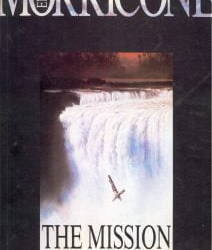
In 2007, he received the Academy Honorary Award “for his magnificent and multifaceted contributions to the art of film music.”
He has been nominated for a further six Oscars. In 2016, Morricone received his first competitive Academy Award for his score to Quentin Tarantino’s film The Hateful Eight, at the time becoming the oldest person ever to win a competitive Oscar.
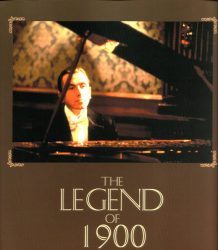
His other achievements include three Grammy Awards, three Golden Globes, six BAFTAs, ten David di Donatello, eleven Nastro d’Argento, two European Film Awards, the Golden Lion Honorary Award and the Polar Music Prize in 2010. Morricone has influenced many artists from film scoring to other styles and genres, including Hans Zimmer,Danger Mouse, Dire Straits, Muse, Metallica, and Radiohead.
Morricone’s Sheet music is fully available in our Library.
List of compositions by Ennio Morricone
This is a list of compositions by composer, orchestrator and conductor Ennio Morricone. He composed and arranged scores for more than 400 film and television productions.
Morricone was considered one of the most influential and best-selling film composers since the late 1940s
He has sold well over 70 million records worldwide, including 6.5 million albums and singles in France over three million in the United States and more than two million albums in Korea.
In 1971, the composer received his first golden record (disco d'oro) for the sale of 1,000,000 records in Italy and a "Targa d'Oro" for the worldwide sales of 22 million.
His score for Sergio Leone's Once Upon a Time in the West is one of the top 5 best-selling original instrumental scores in the world today, with about 10 million copies sold.
His score for The Mission (1986) was also at one point the world's best selling score. Morricone's music for The Good, the Bad and the Ugly (1966) and Le Professionnel (1981) each sold over 3 million copies worldwide.
Filmography
1950s
YearTitleDirectorNotes1955AbandonedFrancesco MaselliOrchestrations only
Score composed by Giovanni Fusco1959La duchessa di Santa LuciaRoberto Bianchi MonteroOrchestrations only
Score composed by Giorgio FaborDeath of a FriendFranco RossiConducting only
Score composed by Mario Nascimbene
1960s
YearTitleDirectorNotesLatest CD / Digital Release1960Run with the DevilMario CameriniOrchestrations only
Score composed by Piero Piccioni,LipstickDamiano DamianiOrchestrations only
Score composed by Giovanni FuscoL'avventuraMichelangelo AntonioniLe pillole di ErcoleLuciano SalceRejected score
Replaced by Armando Trovajoli1961The FascistLuciano SalceFirst full scoreThe Last JudgmentVittorio De SicaArrangements and Conducting only
Score composed by Alessandro Cicognini,1962L'italiano ha 50 anniFrancomaria TrapaniOrchestrations only
Composed by Gino Peguri,Gli italiani e le vacanzeFilippo Walter RattiDocumentary filmI motorizzatiCamillo MastrocinqueCrazy DesireLuciano SalceIl sorpassoDino RisiOrchestrations only
Score composed by Riz OrtolaniI due della legione stranieraLucio FulciArrangements and Conducting only
Score composed by Luis BacalovEighteen in the SunCamillo MastrocinqueA Girl...and a MillionLuciano Salce1963Violenza segretaGiorgio MoserOrchestrations only
Score composed by Giovanni FuscoIl SuccessoDino RisiLe monachineLuciano Salce—El GrecoGunfight at Red SandsRicardo Blasco
Mario CaianoFirst Western film scoreI basilischiLina Wertmüller—1964Una Nuova fonte di energiaDaniele G. LuisiDocumentary filmMalamondoPaolo Cavara—CAM Sugar / 2021I maniaciLucio FulciComposed with Carlo RustichelliI marziani hanno 12 maniFranco Castellano
Giuseppe Moccia—In ginocchio da teEttore Fizzarotti—Bullets Don't ArgueMario Caiano—A Fistful of DollarsSergio LeoneSilver Ribbon Award for Best ScoreI due evasi da Sing SingLucio Fulci—Quartet Records / QR445 / 2021Before the RevolutionBernardo Bertolucci—...e la donna creò l'uomo Camillo Mastrocinque—1965A Pistol for RingoDuccio Tessari—Nightmare CastleMario CaianoFirst horror film scoreAgent 077: Mission Bloody MarySergio GriecoTitle song only
Score composed by Angelo Francesco LavagninoHighest PressureEnzo TrapaniComposed with Luis Enriquez BacalovSlalomLuciano Salce—Menage all'italianaFranco Indovina—Fists in the PocketMarco Bellocchio—ThrillingCarlo Lizzani
Gianni Luigi Polidori
Ettore ScolaComposed with Bruno NicolaiNon son degno di teEttore Fizzarotti—Se non avessi più teIdoli controluceEnzo Battaglia—For a Few Dollars MoreSergio Leone—The Return of RingoDuccio Tessari—1966The Bible: In the BeginningJohn HustonFirst American film Uncredited;
Composed with Toshiro MayuzumiSeven Guns for the MacGregorsFranco Giraldi—Wake Up and DieCarlo Lizzani—Agent 505: Death Trap in BeirutManfred R. KöhlerComposed with Bruno NicolaiThe Hawks and the SparrowsPier Paolo PasoliniNominated - Silver Ribbon Award for Best ScoreThe Battle of AlgiersGillo PontecorvoComposed with PontecorvoThe Hills Run RedCarlo Lizzani—Un uomo a metàVittorio De Seta—How I Learned to Love WomenLuciano Salce—For a Few Extra DollarsGiorgio FerroniComposed with Gianni FerrioFlorence: Days of DestructionFranco ZeffirelliDocumentary filmNavajo JoeSergio Corbucci—The Big GundownSergio Sollima—Beat Records / BCM9603 / 2022The
Read the full article
2 notes
·
View notes
Text
Essential Keith Jarrett (41 Videos)
Essential Keith Jarrett (35 videos of LIVE concerts, performances and transcriptions)
Best Sheet Music download from our Library.
Please, subscribe to our Library. Thank you!
Keith Jarret Sheet Music Transcriptions (6 videos)
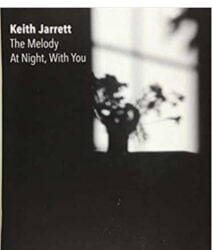
Essential Keith Jarrett (35 videos of LIVE concerts, performances and transcriptions)
https://www.youtube.com/embed?listType=playlist&list=PLhtXB4thVU-eoR7IYvFcaTqK57OQ7PA9E&layout=gallery
Keith Jarret Sheet Music Transcriptions (6 videos)
https://www.youtube.com/embed?listType=playlist&list=PLkA6PBhDkDutvOdqJ9knogZL_g2TqmvUP&layout=gallery
Read the full article
#jazz#jazzscores#keithjarrett#sheetmusicdownload#sheetmusicscoredownloadpartiturapartitionspartitinoten楽譜망할음악ноты
2 notes
·
View notes
Text
The Blue Side of Jazz - Joe Pass (2006)
Joe Pass - The Blue Side of Jazz (2006 documentary)
https://www.youtube.com/watch?v=J5wOdikpRu8
Jazz sheet music download.
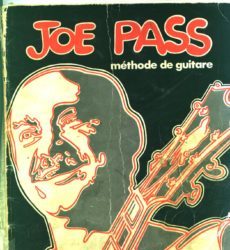
00:00 blues 01:18 "hello fellow guitarists" 03:12 ending a tune 05:38 12 bar blues 06:18 V ↔ I 06:53 half step above I (♯I ~ V) 07:58 half step above IV (♯IV ~ I) 08:42 half step below I (bI7 → I) more specifically (bI13b9 → I) 10:00 “On the guitar, a lot of playing is with forms and continuity” 10:37 half step above IV (♯IV → IV), here using ♯IV13 11:19 half step above IV (♯IV → IV), but changing the root to the b5 (which is the I) 11:56 IV → IV♯dim (IV♯dim ~ (bI13b9)
13:22 turnaround: C9 B7 E7 Am11 D7 G7 (keeping a common tone—the note D) 14:28 12 bar blues (basic) 15:02 12 bar blues (with more subs) 15:58 12 bar blues (with other voicings) — many good voicings 17:32 turnaround 18:06 the importance of continuity in chordal improvisation 21:20 12 bar blues (with voice leading and pedal tones) 22:52 “I'm using a lot of the same grips, they're bar forms. They're chords that all guitar players learn and know” 23:53 12 bar blues
24:20 dom7 ↔ m7 25:10 +examples 25:33 the importance of common tones (in changes) 26:47 “Always count 1, 2, 3, 4. I don't know why” 😂 26:53 12 bar blues 27:07 moving chords down chromatically (C13 B13 Bb13/E A13) 27:46 “you can always move chords either chromatically or through a cycle” 28:35 variation (moving down chromatically) 29:30 12 bar blues (with many 251s), 50s/60s style 30:27 same above
30:57 blues 50s style 31:55 alternative version 33:14 again 33:52 pinky chordal movement (I IV V anchored in I) 34:12 don't do things that break the flow of music 34:47 most guitar greats use mainly simple barred forms 36:09 lines that come from simple forms 37:06 “don't play any chords with four fingers that you can play with two or one” 41:52 another blues variation 42:27 using diminished chords as dom7 chords 43:01 another blues 45:50 Joe checking why his lick wasn't working 49:59 another blues
Read the full article
0 notes
Text
Philip Glass: les 100 musiciens les plus inspirants de tous les temps
Philip Glass: les 100 musiciens les plus inspirants de tous les temps
Please, subscribe to our Library. Thank you!
Téléchargement des meilleures partitions dans notre bibliothèque.
Philip Glass - Metamorphosis | complét
METAMORPHOSIS ONE - Philip Glass (with sheet music)
Philip Glass bio
Philip Glass: les 100 musiciens les plus inspirants de tous les temps
Philip Glass (né le 31 janvier 1937 à Baltimore, Maryland, États-Unis) est un compositeur américain de musique instrumentale, vocale et lyrique innovante, qui a diversement utilisé des éléments minimalistes, atonaux et non occidentaux, dans son travail.

Philip Glass a étudié la flûte dans son enfance et s'est inscrit à l'âge de 15 ans à l'Université de Chicago, où il a étudié les mathématiques et la philosophie et a obtenu son diplôme en 1956. Son intérêt pour la musique atonale l'a amené à étudier la composition à la Juilliard School of Music (M.S., 1962 ) à New York, puis à Paris pour étudier avec Nadia Boulanger. Sa rencontre là-bas avec le sitariste indien Ravi Shankar a influencé de manière décisive le style de composition de Glass, et il a temporairement abandonné des qualités formelles traditionnelles telles que l'harmonie,
tempo et mélodie dans sa musique.
Au lieu de cela, il a commencé à créer des pièces d'ensemble dans un style monotone et répétitif, ces œuvres consistaient en une série de rythmes syncopés ingénieusement contractés ou prolongés dans une structure diatonique stable. Une telle musique minimaliste, jouée par un petit ensemble utilisant un clavier et des instruments à vent amplifiés électroniquement, a valu à Glass un public restreint, mais enthousiaste à New York à la fin des années 1960.
L'opéra Einstein on the Beach (1976) de Philip Glass, composé en collaboration avec Robert Wilson, lui a valu un succès plus large ; ce travail a montré un regain d'intérêt pour les éléments harmoniques occidentaux classiques, bien que son intérêt pour les changements rythmiques et mélodiques surprenants soit resté le moteur de l'œuvre élément le plus dramatique. L'opéra Satyagraha (1980) de Glass était une représentation plus authentiquement « opératique » des incidents de la jeunesse de Mohandas K. Gandhi.
Dans cette œuvre, la répétition bourdonnante de séquences d'accords symétriques atteint un pouvoir obsédant et hypnotique bien accordé aux thèmes religio-spirituels du livret, adapté de l'écriture hindoue la Bhagavadgītā.
L'opéra The Voyage (1992) a eu des critiques mitigées, mais le fait qu'il ait été commandé par le New York Metropolitan Opera (pour commémorer le 500e anniversaire de l'arrivée de Christophe Colomb dans les Amériques) a confirmé l'acceptation croissante de Glass par la musique classique.
établissement.

Philip Glass - Metamorphosis | complét
https://www.youtube.com/watch?v=M73x3O7dhmg&t=7s
"Metamorphosis One" – 00:00 "Metamorphosis Two" – 06:54 "Metamorphosis Three" – 13:59 "Metamorphosis Four" – 19:09 "Metamorphosis Five" – 26:29
'Metamorphosis' (1988), fait référence à la nouvelle de 1915 La Métamorphose de Franz Kafka et s'en inspire. Alors que toutes les pièces ont été écrites en 1988, certaines ont été écrites pour une mise en scène de Metamorphosis, tandis que d'autres étaient pour un film documentaire intitulé The Thin Blue Line réalisé par Errol Morris. 'Metamorphosis One' est joué dans un épisode de Battlestar Galactica par Kara 'Starbuck' Thrace.
Dans le récit, son père a composé et interprété la pièce. Il est également joué dans la finale de la série Person of Interest, Return 0. 'Metamorphosis Two' a constitué la base de l'un des principaux thèmes musicaux du film The Hours. C'est aussi la chanson que le groupe de rock américain Pearl Jam utilise comme musique d'introduction aux concerts.
METAMORPHOSIS ONE - Philip Glass (with sheet music)
https://vimeo.com/474699463
Philip Glass bio
Il est né en 1937 et a grandi à Baltimore. Il a étudié à l'Université de Chicago, à la Juilliard School et à Aspen avec Darius Milhaud. Se trouvant insatisfait d'une grande partie de ce qui passait alors pour la musique moderne, il s'installe en Europe, où il étudie avec la légendaire pédagogue Nadia Boulanger (qui a également enseigné à Aaron Copland, Virgil Thomson et Quincy Jones) et travaille en étroite collaboration avec le virtuose du sitar et compositeur Ravi. Shankar. Il est retourné à New York en 1967 et a formé le Philip Glass Ensemble - sept musiciens jouant des claviers et une variété de bois, amplifiés et alimentés par une table de mixage.
Le nouveau style musical que Glass développait a finalement été surnommé «minimalisme». Glass lui-même n'a jamais aimé le terme et a préféré parler de lui comme d'un compositeur de « musique aux structures répétitives ». Une grande partie de ses premiers travaux était basée sur la réitération prolongée de fragments mélodiques brefs et élégants qui se tissaient dans et hors d'une tapisserie sonore. Ou, pour le dire autrement, il plongeait l'auditeur dans une sorte de météo sonore qui se tord, tourne, entoure, se développe.
Il n'y a rien de « minimaliste » dans sa production. Au cours des 25 dernières années, Glass a composé plus de vingt-cinq opéras, petits et grands ; douze symphonies, treize concertos; des bandes sonores de films allant de nouvelles partitions pour les classiques stylisés de Jean Cocteau au documentaire d'Errol Morris sur l'ancien secrétaire à la Défense Robert McNamara; neuf quatuors à cordes ; un nombre croissant d'œuvres pour piano solo et orgue. Il a collaboré avec Paul Simon, Linda Ronstadt, Yo-Yo Ma et Doris Lessing, entre autres. Il présente des conférences, des ateliers et des performances de clavier solo dans le monde entier et continue de se produire régulièrement avec le Philip Glass Ensemble.
Read the full article
0 notes
Text
John Mayall - The Laws Must Change (Music Scene, 1970)
John Mayall - The Laws Must Change (Music Scene, 1970) Sheet Music
https://www.youtube.com/watch?v=UzmqxTBaNyI
Singer, harmonica player, guitarist, organist, songwriter, and bandleader John Mayall was born Nov. 29 1933 in Macclesfield, Cheshire, England.
A major force in the blues world since he formed the first version of the Bluesbreakers in 1963, Mayall has utilized everyone from Eric Clapton to Blue Mitchell in his projects.

Read the full article
0 notes
Text
100 Progressive Studies, Op.139 – Carl Czerny (No. 16 to 20) sheet music, Noten
100 Progressive Studies, Op.139 – Carl Czerny (No. 16 to 20) sheet music, Noten
https://dai.ly/x8fvc30

Read the full article
0 notes
Text
Symphonie Nr. 6 in h-Moll, Op. 74 (Pathetisch) – Tschaikowsky (Thema – Leichtes Klaviersolo)
Symphonie Nr. 6 in h-Moll, Op. 74 (Pathetisch) – Tschaikowsky (Thema – Leichtes Klaviersolo)
https://vimeo.com/755624167
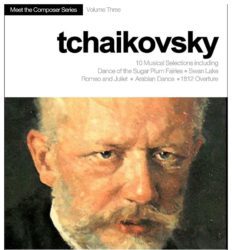
Kurze Biographie von P.I. Tschaikowsky
Pjotr Iljitsch Tschaikowsky wurde 1840 geboren und starb 1893. Er ist ein russischer Komponist und der Sohn seiner künstlerischen Epoche, der Romantik. Er beschäftigte sich mit vielen Genres: Sinfonien, Opern, Balletten, Instrumentalmusik, Kammermusik und Liederzyklen.
Unter diesen Werken ragen zweifellos seine Ballette heraus. Er schuf zahlreiche Werke, die heute zum Repertoire gehören: Schwanensee, Dornröschen, Der Nussknacker. Im symphonischen Aspekt stehen seine Sinfonien, insbesondere die letzten drei, von der vierten bis zur sechsten.
In der Konzertmusik heben wir sein erstes Klavierkonzert oder sein Violinkonzert hervor. Zu seinen Opern gehört natürlich Eugen Onegin.
PI. Tschaikowsky wurde in eine bürgerliche Familie hineingeboren. Schon in jungen Jahren zeigte er ein frühreifes Talent für Musik. Seine Eltern erkannten dies und meldeten ihn im Alter von 5 Jahren zum Klavierunterricht an.
Drei Jahre später konnte er besser vom Blatt lesen als sein eigener Lehrer. Später rieten ihm seine Eltern jedoch davon ab, als sie sahen, dass sein Sohn eine Musikkarriere einschlagen würde. Als es an der Zeit war zu studieren, drängten sie Tschaikowsky, Jura zu studieren, mit der Absicht, dass er Beamter werden würde, was der bürgerliche Wunsch der Familie war.
Im Alter von 14 Jahren stirbt seine Mutter an Cholera, eine Tatsache, die bei dem jungen Privatdetektiv ein Trauma hervorruft. Tschaikowsky. Trotz seines Jurastudiums aufgrund der elterlichen Verpflichtung bleibt Tschaikowsky mit der Musikwelt seiner Heimatstadt St. Petersburg in Kontakt.
Nach seinem Abschluss begann er im Alter von 19 Jahren, Musiktheoriekurse bei Professoren der Russischen Musikgesellschaft wie Zaremba oder Rubinstein zu besuchen. Kurz darauf beschloss er, seine Karriere als Beamter aufzugeben und sich ganz der Musik zu widmen.
Ab 1867, im Alter von 27 Jahren, begann er regelmäßig zu komponieren, seine Werke wurden prompt uraufgeführt und in das Repertoire aufgenommen. Allerdings bescherte ihm sein Ruhm Eifersuchtsprobleme mit anderen Musikern und Komponisten.
Darüber hinaus hat P.I. Tschaikowsky begann, seine Homosexualität in Frage zu stellen. In einer Gesellschaft, in der Homosexualität eindeutig stigmatisiert war, war es für einen Komponisten seines Ruhms nicht einfach, sie zu verinnerlichen. Zu dieser Zeit beschließt Tschaikowsky, einen Studenten seiner Komposition zu heiraten. Die Ehe scheitert völlig und der Komponist gerät in eine tiefe Depression. Er beschließt, Moskau zu verlassen und beginnt damit seine jahrelange Pilgerreise.
Dank der finanziellen Unterstützung einer Mäzenin, Nadezhda von Meck, reist er unter anderem durch Europa, Deutschland und Frankreich sowie durch das ländliche Russland.
1884 reiste er müde vom Reisen und kehrte nach Russland zurück, wo er bis zu seinem Tod im Jahr 1893 blieb. Zu dieser Zeit genoss er trotz seiner emotionalen Probleme (vor allem aufgrund seiner Sexualität) große öffentliche und kritische Anerkennung.
Tschaikowskys Musik
Tschaikowskys Musik repräsentiert Russlands Verbindung zur westlichen Tradition der Romantik. Zur Zeit Tschaikowskys etablierte Russland seine Identität als Land. Eine Gruppe von Komponisten, die sogenannte Fünfergruppe, befürwortete die Schaffung authentisch russischer Musik, also Musik ohne Bezug zur klassischen europäischen Tradition, ohne Bezug zu Komponisten wie Beethoven, Brahms oder Wagner.
Diese Gruppe wollte Musik, die eher aus den Quellen der russischen Folklore als aus der tonal-harmonischen Musik des Westens schöpfte. Tschaikowsky identifiziert sich nicht mit dieser Position und tatsächlich ist sein Verhältnis zu dieser Gruppe zwiespältig, geprägt von Ablehnung und Anerkennung zugleich. Während seiner Pilgerjahre kam Tschaikowsky mit der Musik von Brahms, Beethoven und anderen Komponisten seiner Zeit in Kontakt.
Er kennt diese Musik aus erster Hand und integriert sie in seinen Stil. Es stellt den am stärksten verwestlichten Zweig der romantischen russischen Musik dar. Das soll nicht heißen, dass Tschaikowsky russische Musik überhaupt ablehnt; vielmehr verwendet er viel Volksmusik. Denken Sie daran, dass er einen Teil seiner Pilgerjahre im ländlichen Russland verbringt.
Aus technischerer Sicht kann man sagen, dass Tschaikowsky ein großer Experimentator war. Einige Autoren sahen in ihm einen Komponisten, der alle Aspekte der Komposition außer der Form beherrschte. Aber das ist nicht wahr. Er führte formale Innovationen ein, die in vielen seiner Werke zu sehen sind, darunter auch in der Sechsten Symphonie.
PI. Tschaikowsky verwendete unregelmäßige und ungewöhnliche Taktarten (siehe den zweiten Satz der Sexte im 5/4-Takt); er verwendete das Metrum auf sehr ausdrucksstarke Weise; seine Art der Harmonisierung ist kühn und zu seiner Zeit innovativ; sein Sinn für Orchesterfarben ist äußerst originell und inspirierte andere Komponisten der nächsten Generation (denken Sie an Strawinsky und seine frühen Ballette); seine melodischen Fähigkeiten sind erstaunlich (siehe melodische Analyse unten).
Die Entstehung der Symphonie „Pathétique“
Die Sechste Symphonie entstand Anfang 1893. Es ist bekannt, dass Tschaikowsky einen ersten Entwurf zerrissen hatte, sich aber geschworen hatte, „dass ich dieses Mal durch Willenskraft fertig werden würde“. Im Oktober 1893 liefert er die erste Fassung ab und beginnt mit der Vorbereitung der Fassung für zwei Klaviere.
Der Titel, den Tschaikowsky Pathétique vorschlägt, legt nahe, dass hinter der Symphonie ein Programm steckt. Der Komponist hält jedoch das Geheimnis dieses Programms aufrecht.
Es handelt sich eindeutig um eine Symphonie, die mehrere Lesungen zulässt. Einige Autoren betrachten es als Ventil für ihre unterdrückte Homosexualität. Offenbar hatte Tschaikowsky eine platonische Beziehung zu niemand geringerem als seinem Neffen Bob, dem Widmungsträger der Symphonie. Die Sinnlichkeit, die die Symphonie ausstrahlt, wurde als Sublimierung dieser verbotenen Liebe interpretiert. Es ist niemandem entgangen, dass es in der Symphonie um das Thema Schicksal geht (hier bedeutet das Wort pathétique Emotion und nicht Spott).
Die Symphonie scheint die Vorstellung zu fördern, dass wir das Schicksal irgendwie, vielleicht im Rahmen unseres Einfallsreichtums, herausfordern oder sogar darauf wetten können. Wir schwanken zwischen einem klaren Verständnis unseres Schicksals, wie in den Verzweiflungsthemen des vierten Satzes, und blindem Optimismus, wie im Marsch des dritten Satzes, bis hin zu tiefem Mitgefühl für unsere Lage, wie im Thema des Trostes.
Die Uraufführung der Symphonie fand nicht die Resonanz, die Tschaikowsky erwartet hatte. Es herrschte eine Art Ratlosigkeit zwischen der Öffentlichkeit und den Kritikern. Sie verstanden seine Bedeutung nicht, vielleicht waren seine formalen Neuerungen (eine Symphonie, die in einem klagenden Adagio endet?) übertrieben.
Wenige Tage später stirbt Tschaikowsky an Cholera, weil er ungekochtes Wasser getrunken hat. Es gibt Spekulationen darüber, ob er Selbstmord begangen hat oder sein Leben auf einen Trunk mit dem Schicksal gesetzt hat. Als die Symphonie das nächste Mal gespielt wurde, war sie ein voller Erfolg. Es scheint, dass das Publikum die Symphonie nach seinem Tod verstanden hat.
Read the full article
0 notes
Text
Nicholas Britell (b. 1980) Succession (Piano Solo arr. sheet music)
Nicholas Britell - Succession HBO TV Series (Piano Solo arr.) sheet music
Nicholas Britell (born 1980)
Best Sheet Music download from our Library.
Please, subscribe to our Library. Thank you!FilmographyAs performer
As composer
Television
Nicholas Britell - Succession HBO TV Series (Piano Solo arr.) sheet music
https://rumble.com/embed/v2vggwi/?pub=14hjof
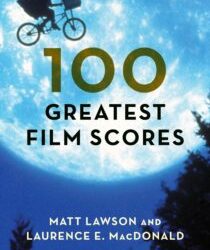
Nicholas Britell (born 1980)
Nicholas Britell (born October 17, 1980) is an American film and television composer. He has received numerous accolades including a Emmy Award as well as nominations for three Academy Awards, and a Grammy Award.
He has received Academy Award nominations for Best Original Score for Barry Jenkins' Moonlight (2016) and If Beale Street Could Talk (2018), and Adam McKay's Don't Look Up (2021). He also scored McKay's The Big Short (2015), and Vice (2018). He is also known for scoring Battle of the Sexes (2017), Cruella (2021), and She Said (2022).
The HBO original series Succession (2018–2023) marked Britell's entry into television. Britell scored all four seasons, earning the Emmy Award for Outstanding Original Main Title Theme Music in 2019.
His score for the second and third season in Succession each earned Primetime Emmy Award for Outstanding Music Composition for a Series nominations in 2020 and 2022.
His score for The Underground Railroad was nominated for the Primetime Emmy Award for Outstanding Music Composition for a Limited or Anthology Series, Movie or Special in 2021.
His works, as described by Soraya McDonald of Film Comment, "seem to organically straddle accessibility and sophistication in a way that goes beyond the typical programming of a big-city pops orchestra…That might have something to do with the fact that Britell has long had one foot in the world of hip-hop and another in the world of classical music."

Nicholas Britell is a Steinway Artist and a Creative Associate of the Juilliard School.
In December 2018, it was announced that Britell would be a part of Esa-Pekka Salonen's newly formed creative collective "brain trust" as Salonen takes the reins as music director of the San Francisco Symphony.
Filmography
As performer
Year Title Director
2008 Eve Natalie Portman
As composer
Film
Year Title Director
2008 New York, I Love You Natalie Portman
2012 Haiti: Where Did the Money Go Michele Mitchell
Gimme the Loot Adam Leon
2013 12 Years a Slave (additional music by) Steve McQueen
2015 The Seventh Fire Jack Pettibone Riccobono
A Tale of Love and Darkness Natalie Portman
The Big Short Adam McKay
2016 Free State of Jones Gary Ross
Moonlight Barry Jenkins
Tramps Adam Leon
2017 Battle of the Sexes Jonathan Dayton and Valerie Faris
2018 If Beale Street Could Talk Barry Jenkins
Vice Adam McKay
2019 The King David Michôd
2021 Cruella Craig Gillespie
Italian Studies Adam Leon
Don't Look Up Adam McKay
2022 Carmen Benjamin Millepied
She Said Maria Schrader
Television
Year Title Notes
2018–2023 Succession 29 episodes
2021 The Underground Railroad 10 episodes
Ziwe Theme music by
2022 Winning Time: The Rise of the Lakers Dynasty 10 episodes
Andor 12 episodes
Read the full article
0 notes
Text
Oscar Peterson LIVE In '63, '64, '65 (Jazz Icons)
Oscar Peterson LIVE In '63, '64, '65 (Jazz Icons)
Personnel:
Tracklisting: Sweden (1963)
Denmark (1964)
Finland (1965)
Jazz sheet music download.
Please, subscribe to our Library. Thank you!
Oscar Peterson LIVE In '63, '64, '65 (Jazz Icons)
https://www.youtube.com/watch?v=_JrIcoFcnjE
Personnel:
Oscar Peterson: piano Ray Brown: bass Ed Thigpen: drums Roy Eldridge: trumpet (Sweden) Clark Terry: trumpet, flugelhorn, vocals (Finland).
Tracklisting:
(please, note some small parts have been deleted to avoid copyright issues with YouTube)
Sweden (1963)
01. Reunion Blues 02. Satin Doll (partially deleted) 03. But Not For Me 04. It Ain't Necessarily So 05. Chicago (That Toddling Town)
Denmark (1964)
06. Soon 07. On Green Dolphin Street (partially deleted) 08. Bags' Groove 09. Tonight 10. C-Jam Blues 11. Hymn To Freedom (partially deleted)
Finland (1965)
12. Yours Is My Heart Alone 13. Mack The Knife 14. Blues For Smedley 15. Misty 16. Mumbles
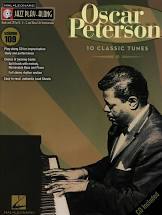
Jazz sheet music download.
Read the full article
0 notes
Text
"Desafinado" by Antonio Carlos Jobim, Newton Mendonça and Jon Hendricks
Desafinado - Antonio Carlos Jobim & Joe Henderson (HQ)
Please, subscribe to our Library. Thank you!
Best Sheet Music download from our Library.Form and Melody
Text Setting
Harmony
Conclusions
Source
Jobim's Sheet Music download.
Desafinado - Antonio Carlos Jobim & Joe Henderson (HQ)
https://www.youtube.com/watch?v=vMLo05EGuBw
There has been a healthy dose of Latin songs that have made their way into the Great American Songbook—after all—Central America and South America are every bit as "American" as the United States. Among the composers of Latin jazz standards, the inimitable guitarist/composer, Antonio Carlos Jobim (1927-1994), stands tall. Jobim composed a great many enduring songs that jazz musicians have latched onto as essential Great American Songbook gems.
Newton Mendonça wrote the original Portuguese lyrics, after which the vocalese master, Jon Hendricks (b. 1921), created an English version. The resulting work is an interesting study in both lyrics and music. The Portuguese word "desafinado" essentially means "out of tune," which justifies Jobim's pointed use of dissonant intervals and non-diatonic melody notes. The pathway followed by the song explores various tonal centers in search of consonance, and the lyricists beautifully captured this essence.
Form and Melody
The form of this song departs from the common AABA and ABAB, thirty-two bar forms. The eight-bar A theme (measures 1-8) is comprised of two four-bar phrases, each mostly stepwise (walking up a perfect fourth) and shaped like a double arc, ending on the flat 5 of the V/V chord in m. 3 and on the flat 5 of the iii7(b5) chord in m. 7).
A is followed by an eight-bar B theme (mm. 9-16). B can also be divided into two phrases, and begins with a quick interval of an ascending seventh starting on an offbeat, which leads directly into a descending line, first stepwise, then involving leaps that highlight dissonances.
The A theme reappears in the next eight bars (mm. 17-24) before a C theme (reminiscent of B for only the first bar) serves as a transition into a new key a major third higher than tonic (mm. 25-32). A new section begins (D at mm. 33-40) and is melodically characterized by a major second stepping back and forth between scale degrees 5 and 6 in the new key, after which a transposition of the new melody motif (the E theme, up a minor third from the D theme) carries the song to the original dominant (V) to bring the listener back to the A theme in the tonic key.
This A statement ends a bit differently, creating an arc of energy at the apex of the second phrase, so it is called A' (A-prime).
This modification of A is often a very useful songwriting strategy, as it creates interest and variation, bringing the song around to a fresh ending having a touch of new material. This new material begins with a four-bar phrase of descending stepwise melodic sequences ("We're bound to get in tune again before too long,") which connect to another eight-bar melodic group characterized by tonal repetition of the tonic pitch.
Jobim utilized a type of cadential extension here, creating a twelve-bar final theme instead of the expected eight. This final twelve bar segment resembles a coda or "tail" built right into the piece (F theme). When one steps back, one can see that Jobim utilized a loose sonata form here—ABAC represents the Exposition, D and E are the Development (a transitional section), A' clearly represents the Recapitulation (return of A) and the F theme functions as an obvious coda.

Jobim's use of motives plays a strong role in this melody's originality, as does his playing with dissonant tones outside the diatonic scale. Predominant motives include the opening four steps up the diatonic major scale in the very first bar. This melodic and rhythmic motive appears in both forward and retrograde varieties (retrograde in m. 9, with variation at m. 13, then retrograde in sequence with a downward step progression at mm. 57-58). A second motive Jobim employs is the rocking whole step, first cleverly introduced at m. 29 ("like the bossa nova, love should swing.").
He features this motive in the last four bars of the first major section of the piece, anticipating and announcing the next large section's primary motive. At mm. 33-48 (the D theme), Jobim combines both motives in an alternating, smoothly flowing pattern, showing his mastery of creating motivic and melodic unity. Hendricks mirrors the more consonant music in this section by using text reminiscent of bygone happy times ("We used to harmonize two souls in perfect time...").
The motive in the final twelve bars, a repeated tonic pitch, successfully makes the composer's point of finally attaining concordance (there is nothing more concordant than a unison pitch) following a melody peppered with dissonant leaps and unexpected tonal shifts. Hendricks' response here reinforces the music with an idealized text depicting two hearts and souls at last abiding in perfect harmony.
Text Setting
As acknowledged above, the lyrics for "Desafinado" were originally in Portuguese, and these are still performed today. Whenever a writer is faced with the challenge of re-setting a text from another language to existing music, there are several important considerations.
First, one must comprehend the difference between a translation and a transliteration. A translation represents the precise meaning of a text in another language. A transliteration merely fits the music into a new language's pattern of declamation—it may have little or nothing to do with the original text's meaning.
A competent lyricist will have a full understanding of the original text's translation before attempting a new transliteration into another language. Some transliterations respect the original text as well as convey the general meaning and theme of the composer's and lyricist's intent. Other transliterations seem to start with a clean slate and find alternate ways to convey a composer's intent (that seems to be the case here with Hendricks' lyrics).
Either way, tastefully setting the text in a manner that suits the singer and preserves the integrity of both music and lyrics becomes the goal. When studying a word-by-word translation of this original text, one quickly discovers that the Portuguese song's theme is about a singer feeling hurt by her lover's disapproval of her out-of-tune singing. She chastises him for not remembering that even those who sing out of tune have fragile hearts.
By contrast, Hendricks' lyric approach changes the focus of the song to describe two people whose dissonant hearts must be made consonant for love to thrive. Regardless of the version preferred, a comparison of these two very different perspectives lends itself to a deeper understanding of the music and how it can be interpreted. Two lyricists may set the same piece of music using completely different paradigms. In this case, Mendonça spoke from a literal point of view regarding the dissonance expressed in the song title, while Hendricks spoke from a figurative, metaphorical standpoint.
Harmony
Jobim's initial harmonic move (between the first and second chords of the piece) immediately sets the tone for a theme of dissonance throughout the song. He moves from a casual I chord to a V7(b5)/V—in no way providing smooth harmony or easy voice leading. He then mollifies the harshness by turning that chord into a minor chord over the same root and moves through a ii7-V7 progression which leads to a surprising vi7(b5), reflecting the previous b5 chord. The melody notes here are those dissonant b5s and b9s.
His B theme starts with ii7 and proceeds through a circle of dominant chords, but does not find its way back to the V of tonic before he interjects a dissonant major 7th built on the b9 immediately preceding a turnback progression (V7-I) to return to A. Jobim's unexpected harmonic shifts effectively create the dissonant tension illuminated in the text. The C theme combines the two motives previously described and shifts the harmony from I to III. Not coincidentally, Hendricks' lyrics beautifully reflect the harmony at this juncture: "Seems to me you've changed the tune we used to sing..."
At the D theme, Jobim utilizes a chromatically ascending bass from I-dim7/ii-ii-V7 followed by a typical I-vi-ii-V7 before modulating up a third and repeating the chromatic ascent (in the new key). He then transforms the V7 chord of that new key into a minor ii of the original tonic, moves to a non-diatonic, flat vii chord (Hendricks again catches this, and writes "slightly out of tune" in the measure containing this "wrong" chord) before landing on a V7/V-V7-I progression that returns to the A theme. Harmonically the song assumes a ii-V7-iii(b5)-VI7-ii shape at the point where A digresses to become A' (m. 55, "sing a song of loving").
In the four-bar transition (mm. 57-60) that opens the F theme, the harmony passes through an unusual juxtaposition of ii-iv6-I ("we're bound to get in tune again before too long...") before extending a cadence via a roundabout V7/V-bVII7-V7/V which finally makes its way to ii-V7-I in the tonic key.
Conclusions
"Desafinado" takes the idea of wordpainting (reflecting textual meanings in music) to a new level in so many ways, and yet, one could argue the reverse if the music were composed first (that the lyricists served as obsequious handmaidens of the music). Either way, both Jobim and Hendricks showed their cleverness by creating a piece of music in which the wedding of music and text are readily apparent in the way the text parallels non-diatonic, melodic pitch choices, dissonant harmonic tension, and the third-related, leaping tonics that wander throughout the A-B-A-C-D-E-A'-F (sonata) form this unusual piece exhibits.
The enduring renown of this piece is remarkable, given its fascinating complexity, and yet, Jobim was careful to balance complexity whenever it occurred with something relatively simple, thereby maintaining the song's accessibility and relevance for generations of listeners. For example, when the melody was challenging and non-diatonic, he tended toward complementing it with more traditional, gentle-on-the-ear harmonies, never seeking to completely confound those performing or listening to the song.
Similarly, when the harmony explored new territory, the melody tended to be motivic and, therefore, familiar. Such exquisite balance between complexity and simplicity, light and dark, dynamic and static, and dissonance and consonance, appears to be ever present in so many wonderful works that make up the Great American Songbook.
Source
Jobim's Sheet Music download.
Read the full article
0 notes
Text
Mozart Grieg: Piano Sonata no 16, K. 545 arr. for 2 pianos (sheet music, Noten)
Mozart Grieg Piano Sonata no 16, K. 545 arrangement for two pianos with sheet music, Noten
https://www.youtube.com/watch?v=7IfHeQ66GkE

On 27 May 1877 Edvard Grieg wrote to his publisher: "During the winter I have been engaged on a task that I found particularly interesting - adding a free, second piano to several of Mozart's sonatas.
The work was intended in the first instance for teaching purposes, but by chance found its way into the concert hall, where the whole thing sounded surprisingly good." Grieg himself went some way towards preempting potential protests by insisting that his arrangements were intended for teaching.
Such a line of argument obliges to examine the customs of the time - an age in which the gramophone was barely a glint in its investor's eye and there was no opportunity to hear and follow interpretations at second hand.
As a result, it was common practice around 1880 for piano teachers to accompany their pupils on a second piano, either to ensure the correct tempo or, perhaps, to make the soloist's solitary existence somewhat less intolerable...
Read the full article
0 notes
Text
Oblivion, by Astor Piazzolla for Cello and piano arr. (partitura, sheet music)
Oblivion (Astor Piazzolla) for Cello and piano arr. (partitura, sheet music)
https://vimeo.com/504110828
Sheet Music download here.

sheet music score download partitura partition spartiti 楽譜 망할 음악 ноты
Read the full article
0 notes
Text
Rachmaninow D minor Sonata Op 28 II Lento Zoltán Kocsis (Noten)
Rachmaninow D minor Sonata Op 28 II Lento Zoltán Kocsis, Noten, with sheet music
Bester Notendownload aus unserer Bibliothek.
Please, subscribe to our Library. Thank you!Background
Composition
Reception
Best Sheet Music download from our Library.
Rachmaninow D minor Sonata Op 28 II Lento Zoltán Kocsis, Noten, with sheet music
https://www.youtube.com/watch?v=X4YtSGrxwrM
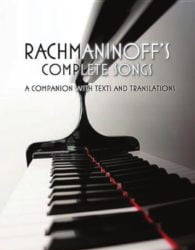
Piano Sonata No. 1 in D minor, Op. 28, is a piano sonata by Sergei Rachmaninow, completed in 1908. It is the first of three "Dresden pieces", along with Symphony No. 2 and part of an opera, which were composed in the quiet city of Dresden, Germany.
It was originally inspired by Goethe's tragic play Faust; although Rachmaninow abandoned the idea soon after beginning composition, traces of this influence can still be found. After numerous revisions and substantial cuts made at the advice of his colleagues, he completed it on April 11, 1908. Konstantin Igumnov gave the premiere in Moscow on October 17, 1908. It received a lukewarm response there, and remains one of the least performed of Rachmaninow's works.
It has three movements, and takes about 35 minutes to perform. The sonata is structured like a typical Classical sonata, with fast movements surrounding a slower, more tender second movement. The movements feature sprawling themes and ambitious climaxes within their own structure, all the while building towards a prodigious culmination. Although this first sonata is a substantial and comprehensive work, its successor, Piano Sonata No. 2 (Op. 36), written five years later, became the better regarded of the two. Nonetheless, it, too, was given serious cuts and opinions are mixed about those.
Background
In November 1906, Rachmaninow, with his wife and daughter, moved to Dresden primarily to compose a second symphony to diffuse the critical failure of his first symphony, but also to escape the distractions of Moscow. There they lived a quiet life, as he wrote in a letter, "We live here like hermits: we see nobody, we know nobody, and we go nowhere. I work a great deal," but even without distraction he had considerable difficulty in composing his first piano sonata, especially concerning its form.
The original idea for it was to be a program sonata based on the main characters of the tragic play Faust by Johann Wolfgang von Goethe: Faust, Gretchen, and Mephistopheles, and indeed it nearly parallels Franz Liszt's own Faust Symphony which is made of three movements which reflect those characters. However, the idea was abandoned shortly after composition began, although the theme is still clear in the final version.
Rachmaninow enlisted the help of Nikita Morozov, one of his classmates from Anton Arensky's class back in the Moscow Conservatory, to discuss how the sonata rondo form applied to his sprawling work. At this time he was invited, along with Alexander Glazunov, Nikolai Rimsky-Korsakov, Alexander Scriabin, and Feodor Chaliapin, to a concert in Paris the following spring held by Sergei Diaghilev to soothe France–Russia relations, although Diaghilev hated his music. Begrudgingly, Rachmaninow decided to attend only for the money, since he would have preferred to spend time on this and his Symphony No. 2 (his opera project, Monna Vanna, had been dropped). Writing to Morozov before he left in May 1907, he expressed his doubt in the musicality of the sonata and deprecated its length, even though at this time he had completed only the second movement.
On returning to his Ivanovka estate from the Paris concert, he stopped in Moscow to perform an early version of the sonata to contemporaries Nikolai Medtner, Georgy Catoire, Konstantin Igumnov, and Lev Conus. With their input, he shortened the original 45-minute-long piece to around 35 minutes. He completed the work on April 11, 1908. Igumnov gave the premiere of the sonata on October 17, 1908, in Moscow, and he gave the first performance of the work in Berlin and Leipzig as well, although Rachmaninow missed all three of these performances.
Composition
Movement 1.
The piece is structured as a typical sonata in the Classical period: the first movement is a long Allegro moderato (moderately quick), the second a Lento (very slow), and the third an Allegro molto (very fast).
- Allegro moderato (in D minor, ends in D major) The substantial first movement Allegro moderato presents most of the thematic material and motifs revisited in the later movements. Juxtaposed in the intro is a motif revisited throughout the movement: a quiet, questioning fifth answered by a defiant authentic cadence, followed by a solemn chord progression. This densely thematic expression is taken to represent the turmoil of Faust's mind. The movement closes quietly in D major.
- Lento (in F major) In key, the movement pretends to start in D major before settling in the home key of F major. Although the shortest in length and performance time, the second movement Lento provides technical difficulty in following long melodic lines, navigating multiple overlapping voices, and coherently performing the detailed climax, which includes a small cadenza.
- Allegro molto (in D minor) Ending the sonata is the furious third movement Allegro molto. Lacking significant thematic content, the movement serves rather to exploit the piano's character, not without expense of sonority. The very first measures of the first movement are revisited, and then dissolves into the enormous climax, a tour de force replete with full-bodied chords typical of Rachmaninow, which decisively ends the piece in D minor.
Reception
Rachmaninow played early versions of the piece to Oskar von Riesemann (who later became his biographer), who did not like it. Konstantin Igumnov expressed interest upon first hearing it in Moscow, and following his suggestion Rachmaninow cut about 110 bars.
The sonata had a mediocre evaluation after Igumnov's premiere in Moscow. Nikolai Rimsky-Korsakov had died several months previously, and the burden of heading Russian classical music had fallen on this all-Rachmaninow programme of October 17, 1908. Although the concert, which also included Rachmaninow's Variations on a Theme of Chopin (Op. 22, 1903), was "filled to overflowing", one critic called the sonata dry and repetitive, however redeeming the interesting details and innovative structures were.
Lee-Ann Nelson, via her 2006 dissertation, noted that Rachmaninow's revisions are always cuts, with the material simply excised and discarded. The hypothesis is that the frequency of negative responses to many of his pieces, not just the response to the first symphony, led to a deep insecurity, particularly with regard to length. The musicologists Efstratiou and Martyn argued against, for instance, the cuts made to the second sonata on a formal basis. Unlike other pieces, such as the second piano sonata and the fourth piano concerto, no uncut version of this piece is currently known to be extant.
Today, the sonata remains less well-known than Rachmaninow's second sonata, and is not as frequently performed or recorded. Champions of the work tend to be pianists renowned for their large repertoire. It has been recorded by Eteri Andjaparidze, Vladimir Ashkenazy, Boris Berezovsky, Idil Biret, Sergio Fiorentino, Leslie Howard, Ruth Laredo, Valentina Lisitsa, Nikolai Lugansky, Olli Mustonen, John Ogdon, Michael Ponti, Santiago Rodriguez, Alexander Romanovsky, Howard Shelley, Daniil Trifonov, Xiayin Wang, and Alexis Weissenberg. Lugansky performs the piece regularly.
Read the full article
0 notes
Text
Scott Joplin - Bethena - A Concert Waltz (piano sheet music, Noten, partition, partitura, spartito)
Scott Joplin - Bethena - A Concert Waltz (piano sheet music, Noten, partition, partitura, spartito)
https://www.youtube.com/watch?v=Q8818SVte-c

Read the full article
0 notes
Text
Milonga del Angel, Astor Piazzolla, solo piano arrangement
Milonga del Angel, Astor Piazzolla, solo piano arrangement
https://rumble.com/embed/v2uqjt2/?pub=14hjof
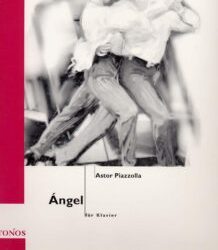
Read the full article
#partitura#partituramilongapiazzolla#sheetmusicdownload#sheetmusicscoredownloadpartiturapartitionspartitinoten楽譜망할음악ноты
0 notes